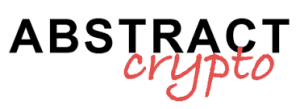Another billion USDT injected by the Tether treasury, bringing the total printed in July 2024 to an all-time record of 8 billion: this is one of the most aggressive expansion operations ever seen in the stablecoin sector.
What happened: why did Tether print another 1 billion USDT?
Since the beginning of July, Tether, the giant of stablecoin, has been increasing the supply of USDT at an impressive pace. Every week, billions of new tokens have been added, culminating in yet another maxi-print of 1 billion. Arkham, a blockchain analytics platform, shows growing flows of transfers between Tether wallets and major exchanges.
These movements indicate a strong institutional demand, often also related to large operators (“crypto whales”). However, the speed and volume of the expansion had never been seen before in a single month.
What is the impact of this USDT boom on the crypto market?
The injection of $8 billion of new USDT in less than a month is generating intense discussions within the community. On one hand, this maneuver meets a demand for liquidity in bitcoin and altcoins that seems to have increased in July 2024. On the other hand, concerns are growing within the community about the solidity of the Tether system.
Tether(@Tether_to) has just minted another 1B $USDT!
Since July 1, #Tether has minted a total of 8B $USDT.https://t.co/Hpn4LisKe2 pic.twitter.com/k60rFmNR5x
— Lookonchain (@lookonchain) July 28, 2025
The scambi USDT on the main platforms show very high volumes, with a dominant presence in trading pairs. The greater availability of stablecoins improves the liquidity of crypto markets, but the current pace also raises doubts about sustainability and transparency in the long term.
Tether printing: is it just real demand or is there a risk of speculation?
Historical data shows that similar increases in the supply of USDT often coincide with moments of intense speculative activity or anticipatory movements in the sector. According to analysts, July 2024 marks the fastest monthly growth ever recorded by Tether in terms of new issuances.
The interpretations are conflicting:
- For some, the growing demand reflects a trust in crypto and serves to support transfers, DeFi and investments.
- Others see the risk that excessive expansion could “inflate” the ecosystem, creating fragile foundations ready to give way if the sentiment were to change.
The crypto whales are playing a very active role, with evident movements between Tether treasury and centralized exchanges. Each operation is analyzed from the perspective of potential pumps, rotations on memecoin, and strategic positioning.
Why is the community talking about “tether printing concerns”?
The term “tether printing concerns” refers to the entire series of fears that accompany operations of this type:
- Regulation: Such aggressive expansion can attract the attention of financial authorities on the transparency of reserves and the management of funds.
- Stability: If the growth were not supported by real demand for USDT, there would be a risk of destabilizing effects on prices and confidence in the stablecoin system.
- Reputation: Any suspicions can generate rumors, panic, or sudden sell-offs, especially during phases of global crypto market volatility.
As of today, however, the new USDT are almost entirely absorbed by the exchanges and used in operations with bitcoin and other crypto.
How do exchanges, whales, and investors move after the USDT boom?
The year 2024 shows a trend: every new batch of 1 billion USDT is tracked in real-time by crypto trackers and analysts. In fact:
- Exchange like Binance and OKX see an increase in incoming wallets and the volume in USDT increases, indicating new demand.
- Whale alert monitors large transfers, with patterns suggesting strategic accumulation for new rounds of buying and selling.
- On the DeFi side, the availability of USDT stimulates liquidity on lending, farming, and pooling platforms, offering more margin to operators.
Investors, consequently, are wondering if this phase heralds a bull season fueled by liquidity or if the system risks overheating (“bubble”).
What could happen in the coming months with the Tether trend?
Observers are monitoring whether the pace of July will be maintained or if Tether will return to more contained printing levels. The current boom should be interpreted as a response to immediate market needs, but the trend should be followed closely: new regulations could change the situation very quickly.
What this record really means: impact and prospects for the crypto sector
The historic record of $8 billion USDT printed in a single month marks a watershed for the growth of the leading stablecoin. On one hand, the liquidity increases operational possibilities for those investing in bitcoin, DeFi, and emerging tokens, while on the other hand, the growth rate raises strong questions about sustainability, systemic risks, and the future of regulation on stablecoins.
The road is yet to be written: what will happen in the coming weeks will depend on the response of the markets, the big investors, and any moves by the authorities on controls. Follow the discussion on social platforms and stay updated, because the domino effect of USDT printing could change the face of the crypto market even in the months to come.


